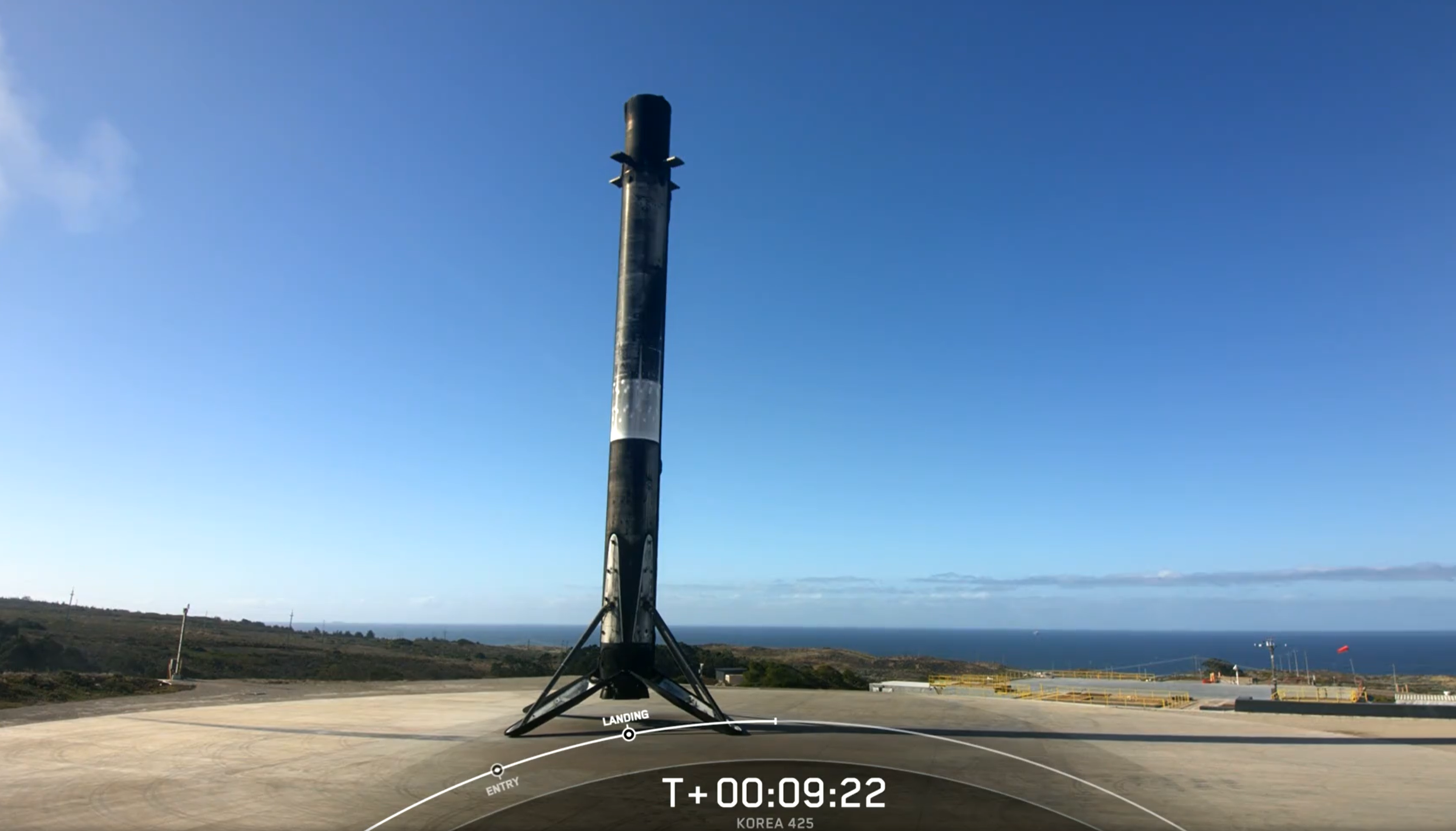
SpaceX launched Ireland's first satellite and a South Korean reconnaissance satellite today.
A SpaceX Falcon 9 rocket launched at 1:19 p.m. EST (1819 GMT or 10:10 a.m. PST) from Vandenberg Space Force Base on the California coast. The first stage of the Falcon 9 rocket landed at Landing Zone 4 at Vandenberg around 8 minutes after lift off in what was the company's 250th successful recovery of an orbital class rocket.
SpaceX stopped their livestream after stage separation at the request of today's customers; no views of the rocket's second stage were offered.
On board was a total of 25 satellites. One is the Educational Irish Research Satellite-1 (EIRSAT-1) built by students from University College Dublin following a 2017 proposal. Also on board was the first South Korean spy satellite in a set of five that SpaceX has been contracted to complete launching by 2025.

The South Korean satellite, called 425 Project EO/IR, the initial satellite will be 1,700 pounds (800 kg) in mass and include abilities in infrared (heat-seeking wavelengths) as well as electro-optical capabilities, SpaceNews reported in 2022. The South Korean satellite is set to launch into space just days after North Korea claimed to have deployed its own spy satellite in space from a Nov. 24 launch.
EIRSAT-1's payloads were supported by the European Space Agency Academy's Fly Your Satellite program. Its payloads include a gamma ray detector, an evaluation of protective coatings, and a rare kind of attitude control system that orients itself with the Earth's magnetic field, according to satellite's website.

Some of the team ready to watch the launch in California! 🚀#EIRSAT1 #irelandsfirstsatellite #flyyoursatellite #launchday pic.twitter.com/efoZ2g90GMDecember 1, 2023
Also onboard were a variety of commercial satellites including Space BD's ISL48, SITAEL's microHETSat, D-Orbit's ION SCV Daring Diego, York Space Systems' Bane, and PlanetIQ's GNOMES-4.
The mission will be the 88th launch for SpaceX in 2023 and the 84th launch this year with the Falcon 9. (The others used the company's much larger Falcon Heavy or Starship rockets.)







